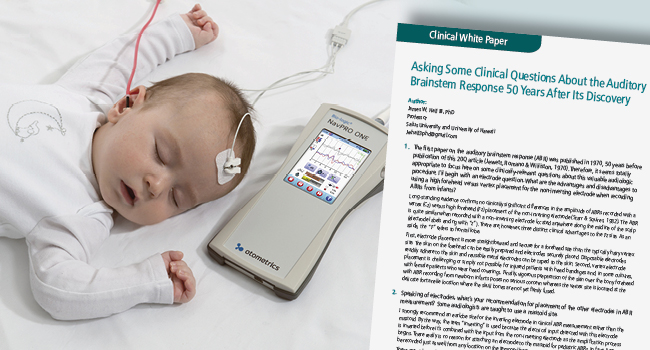Q&A on Auditory Brainstem Response (ABR)
with Audiologist James W. Hall III, PhD
If you’re dealing with an infant who may be hard-of-hearing, then auditory brainstem response knowledge may be your only way to conduct an effective, in-depth hearing screening. With that said, ABR usage has changed significantly since it was first introduced in 1970. Relatively fine distinctions, such as the placement of the non-inverting electrode, can yield considerable advantages.

Learn from a pioneer in Newborn Hearing Screening
James W. Hall III, PhD, is one of the world’s most credentialed experts in ABR usage. He’s the author of papers such as, “Simple and Evidence-Based ABR Protocol for Infant Hearing Assessment,” and he currently serves in professorships at Salus University, the University of Hawaii, and as an Extraordinary Professor at the University of Pretoria South Africa. With his expertise, you may be able to greatly refine your clinical technique and gain more accurate results from your ABR assessments.
From electrode placement to impedance values to stimulus options and more, James Hall III offers important insights, clinical guidance, and best practices resulting from 50 years of ABR research. As we approach this golden anniversary, audiologists will find themselves with an improved foundation of knowledge to provide the best assessments for their youngest patients.
Complete this form to receive your copy of Dr. Halls Q & A on ABR Clinical White Paper.
